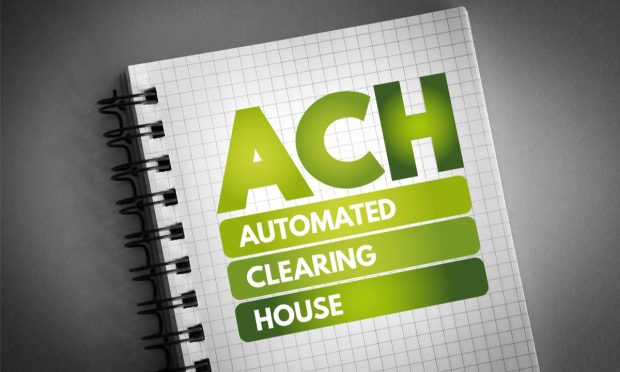Why Businesses Still Love ACH Payments

When firms sought digital alternatives to paper checks during the pandemic, many discovered or rediscovered the benefits of a familiar standby: the automated clearing house (ACH) transfer.
Sixy-eight percent of chief financial officers (CFOs) report increased use of ACH at their firms due to digitization since the pandemic’s onset, making ACH the No. 1 payment method in terms of being used more frequently, according to the “Real-Time Payments Tracker,” a PYMNTS and The Clearing House collaboration.
Get the report: Real-Time Payments Tracker
Originally developed in the 1970s, ACH payments are a natural go-to for firms to use as they digitize and innovate to keep up with the pandemic-driven digital shift.
Realizing Simplicity and Cost Savings
ACH enables money to be moved electronically between bank accounts, and the payments typically settle within one to three days. It has become one of the primary payment methods in the U.S. for business uses such as paying employees, taxes and vendors.
The benefits of ACH include speed, low cost and a contactless process — a combination that is leading many organizations to expand its use in the pandemic era as a much-needed and near-total replacement for paper checks.
Even without the pandemic’s added impetus, ACH has some obvious benefits over paper checks. While checks can take time to arrive or even get lost in the mail, electronic payments are a prompt and dependable payment method. They require little or no labor to enter into a recordkeeping system, as banks create an electronic record during every transaction.
ACH payments also use fewer resources, with no need for paper, ink, labor or fuel to cut, transport and deposit checks, and ACH transfers often cost less to process than credit card payments.
The method has multiple business use cases, including ACH recurring payments such as subscriptions or insurance premiums, paying employees, paying tax bills and enabling internal fund transfers within organizations.
B2B use cases are experiencing a boom as well, as economic pressures make suppliers’ wait times for checks increasingly untenable.
Helping Businesses Unlock Digital Efficiencies
As businesses realize the simplicity and cost savings they can achieve through ACH, growth in use is likely to continue.
While ACH transactions have taken on a much more prominent role in their payment operations over the past several years, the pandemic has driven even more enthusiasm for the method.
In addition, ACH is helping businesses unlock digital efficiencies to satisfy their employees, customers and partners, and may encourage them to adopt other digital payments as well in the years ahead.
For example, a pilot program called IXB (immediate cross-border payments) between The Clearing House, EBA Clearing and SWIFT, with the support of two dozen banks at present, will leverage instant payments and real-time messaging into a variety of new use cases.
Read more: TCH’s Immediate X-Border Payments Pilot Eyes Payroll, Remittances
TCH’s payment networks clear and settle in excess of $2 trillion daily through wire, ACH, check image and real-time payments — so there’s a natural on-ramp into IXB for businesses and consumers when the pilot moves into production beginning next year.
Even as cutting-edge innovations such as real-time payments and cryptocurrencies gather force and become mainstream, ACH’s future is still bright. In the march toward faster, more efficient and contactless payment solutions, ACH is a compelling first step.
